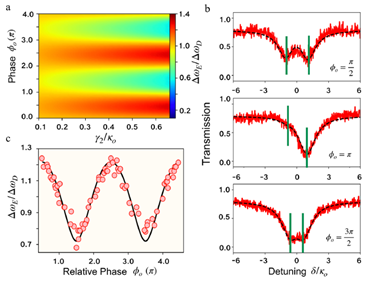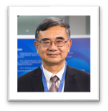BAQIS Scientist Gui-Lu Long and His Team Realized Sensitivities Enhancement Using Exceptional Surface for the First Time
2021/05/14
Recently, the team of Prof. Gui-Lu Long and Prof. Min Wang experimentally realized the ES-based sensor for the first time. Their research results were published online under the title "Experimental realization of sensitivity enhancement and suppression with exceptional surfaces" , featured on the back cover of the internationally renowned optical journal "Laser & Photonics Reviews" (Impact Factor 10.655).

Exceptional points (EPs), known as spectral singularities in the non-Hermitian spectrum have been exploited recently for their rich novel physics in both classical and quantum systems. At EPs, both the eigenvalue and the eigenstate collapse at the same time. This unique eigenstate space reduction implies that systems around EPs can be exploited as sensors by monitoring the splitting in the eigen energies or frequencies of the systems. However, for real sensing applications, it is a challenging task to precisely control the parameters fixed at EPs. Fortunately, the proposed exceptional surface (ES) scheme can effectively improve the robustness of parameters and solve this problem.

Fig. 1: Sensing in an ES. (a) Conceptional illustration of an EP generalizing to a manifold in a higher dimensional physical parameter space, which can be demonstrated by a unidirectional coupling in the microcavity systems. (b) Measured enhancement of mode splitting. (c) Eigenvalues in parameter spaces around an ES.
Recently, the team of Gui-Lu Long and Min Wang and their collaborators experimentally realized the ES-based sensor for the first time. Here, an ES is composed of a whispering-gallery-mode microresonator and two nanofiber waveguides, resulting in a unidirectional coupling between two degenerate counter-propagating modes with an external optical isolator. Compared with the traditional sensing scheme, this scheme can increase the sensitivity by 2 times in the experiment with stronger robustness.
"The system is simple, robust, and can be easily operated around an exceptional surface. " Says Prof. Long.
The suppression of mode splitting near the ES was also observed for the first time in their experiment, which is of great significance for the study of state manipulation in non-Hermitian systems. This work further pushes forward the application of optical ES in sensors.

Fig. 2: Phase controlled frequency splitting in an ES. (a) Simulation results. (b) Transmission spectrum evolution by tuning the phase. (c) Effect of phase on the frequency splitting
This work was supported by projects BAQIS, the National Natural Science Foundation of China, the National Key R&D Program of the Ministry of Science and Technology, the Key R&D Program of Guangdong Province, and the Beijing Future Chip Technology Advanced Innovation Center.
About Prof. Gui-Lu Long

Prof. Long is BAQIS vice president and PI of Quantum Secure Direct Communication and Quantum Algorithm Application Group. Prof. Long is also a Professor of Physics , Tsinghua University.
 中文
中文 Email
Email QCloud
QCloud Log in
Log in
